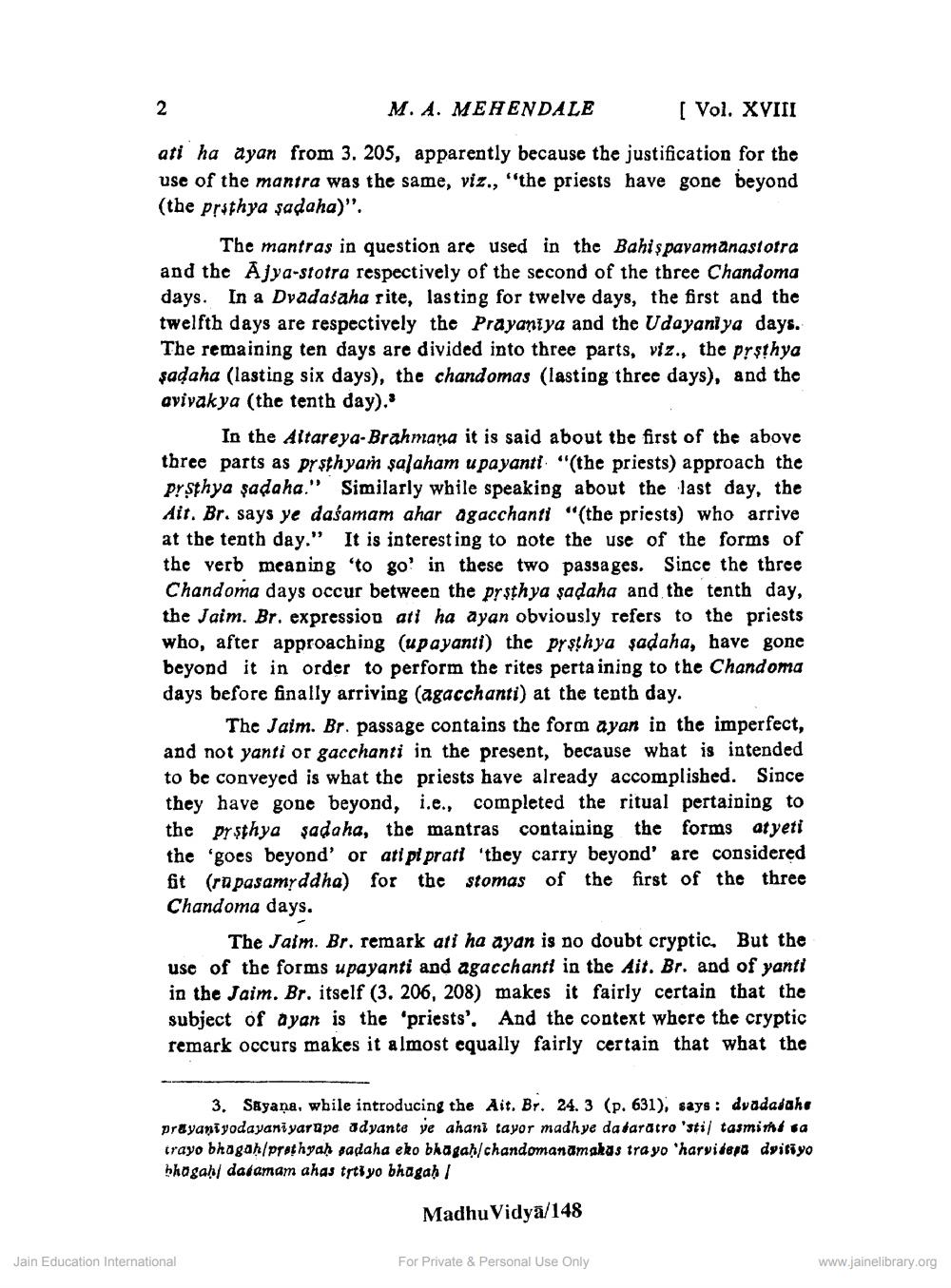________________
2
[Vol. XVIII
ati ha ayan from 3. 205, apparently because the justification for the use of the mantra was the same, viz., "the priests have gone beyond (the prathya sadaha)".
M. A. MERENDALE
The mantras in question are used in the Bahispavamanastotra and the Ajya-stotra respectively of the second of the three Chandoma days. In a Dvadasaha rite, lasting for twelve days, the first and the twelfth days are respectively the Prayantya and the Udayaniya days. The remaining ten days are divided into three parts, viz., the prsthya sadaha (lasting six days), the chandomas (lasting three days), and the avivakya (the tenth day)."
In the Altareya-Brahmana it is said about the first of the above three parts as prsthyam sajaham upayanti "(the priests) approach the Prsthya şadaha." Similarly while speaking about the last day, the Ait. Br. says ye daśamam ahar agacchanti "(the priests) who arrive at the tenth day." It is interesting to note the use of the forms of the verb meaning 'to go' in these two passages. Since the three Chandoma days occur between the prsthya sadaha and the tenth day, the Jaim. Br. expression ati ha ayan obviously refers to the priests who, after approaching (upayanti) the prsthya sadaha, have gone beyond it in order to perform the rites pertaining to the Chandoma days before finally arriving (agacchanti) at the tenth day.
The Jaim. Br. passage contains the form ayan in the imperfect, and not yanti or gacchanti in the present, because what is intended to be conveyed is what the priests have already accomplished. Since they have gone beyond, i.e., completed the ritual pertaining to the prsthya şadaha, the mantras containing the forms at yeti the 'goes beyond' or atipi prati 'they carry beyond' are considered fit (rupasamyddha) for the stomas of the first of the three Chandoma days.
The Jaim. Br. remark att ha ayan is no doubt cryptic. But the use of the forms upayanti and agacchantt in the Ait. Br. and of yanti in the Jaim. Br. itself (3. 206, 208) makes it fairly certain that the subject of ayan is the 'priests'. And the context where the cryptic remark occurs makes it almost equally fairly certain that what the
3. Sayaṇa, while introducing the Ait. Br. 24. 3 (p. 631), says: dvadasahe prayani yodayaniyarupe adyante ve ahani tayor madhye dasaratro 'sti tasmimé sa trayo bhagaḥ/prathyaḥ sadaha eko bhagaḥ/chandomanāmakas trayo 'harvidesa dvitiyo bhogaḥ| datamam ahas tṛtiyo bhāgaḥ |
Madhu Vidya/148
Jain Education International
For Private & Personal Use Only
www.jainelibrary.org




